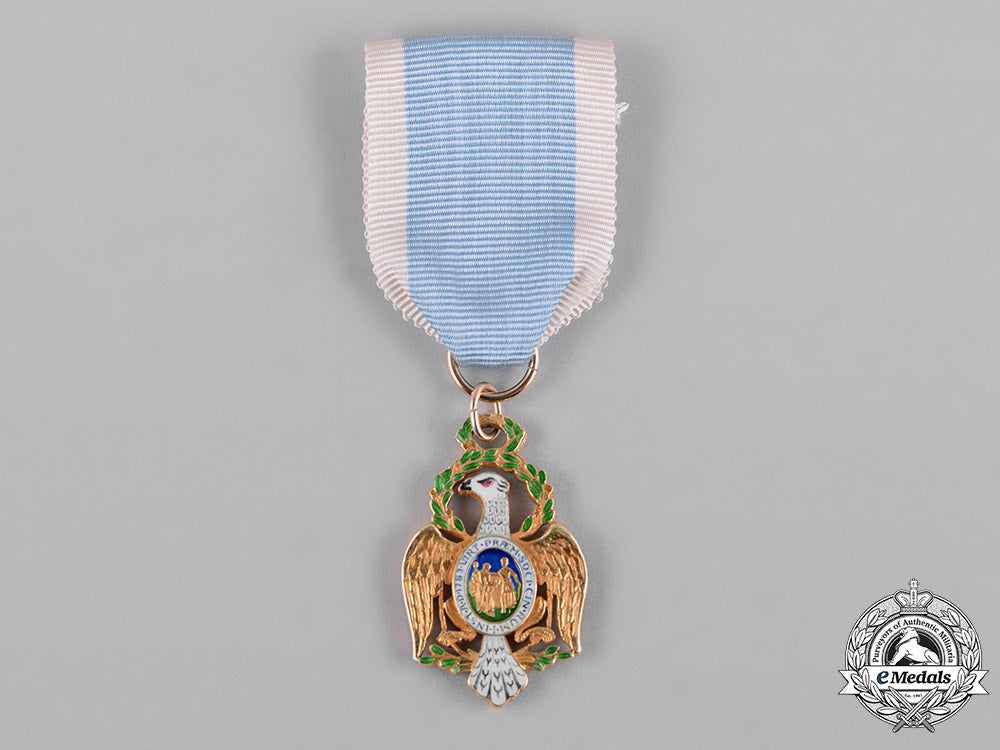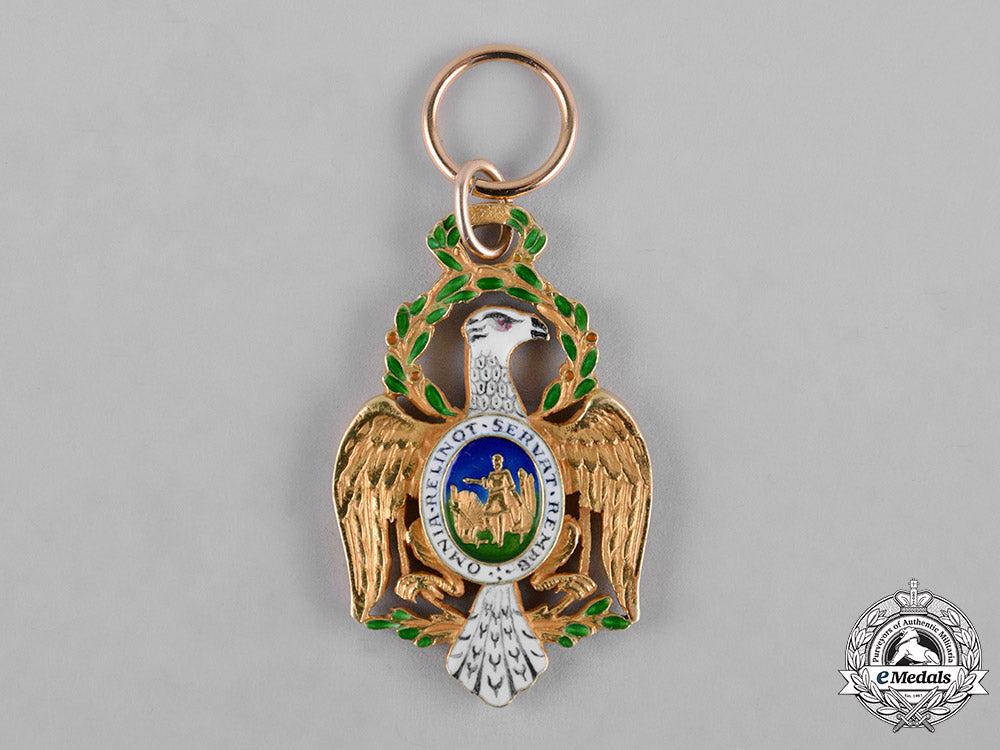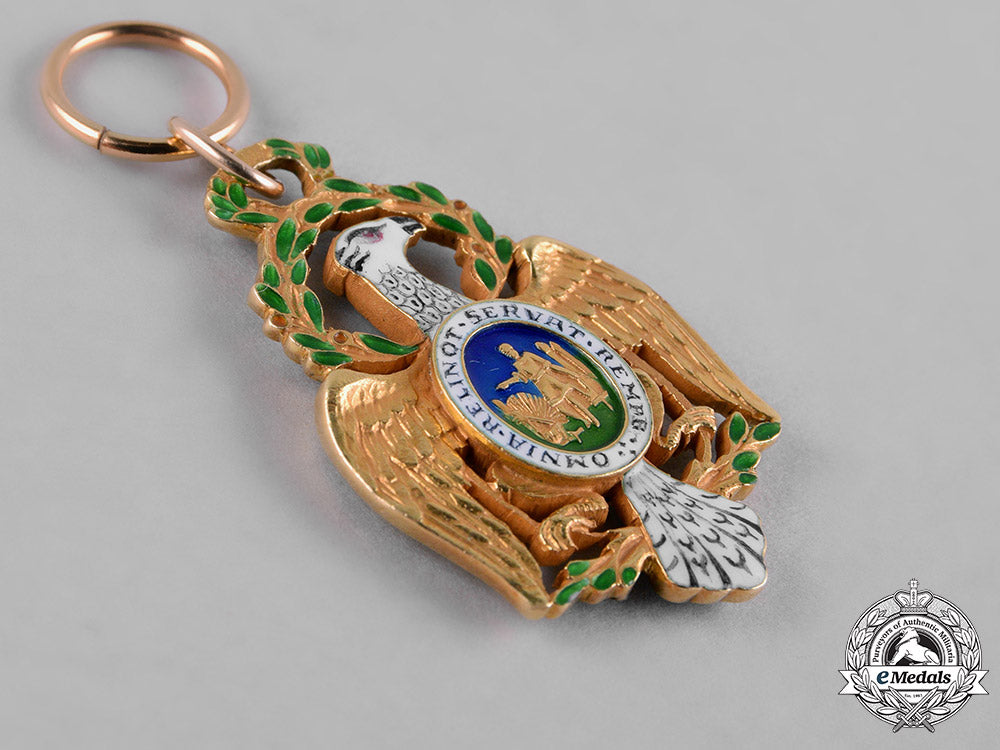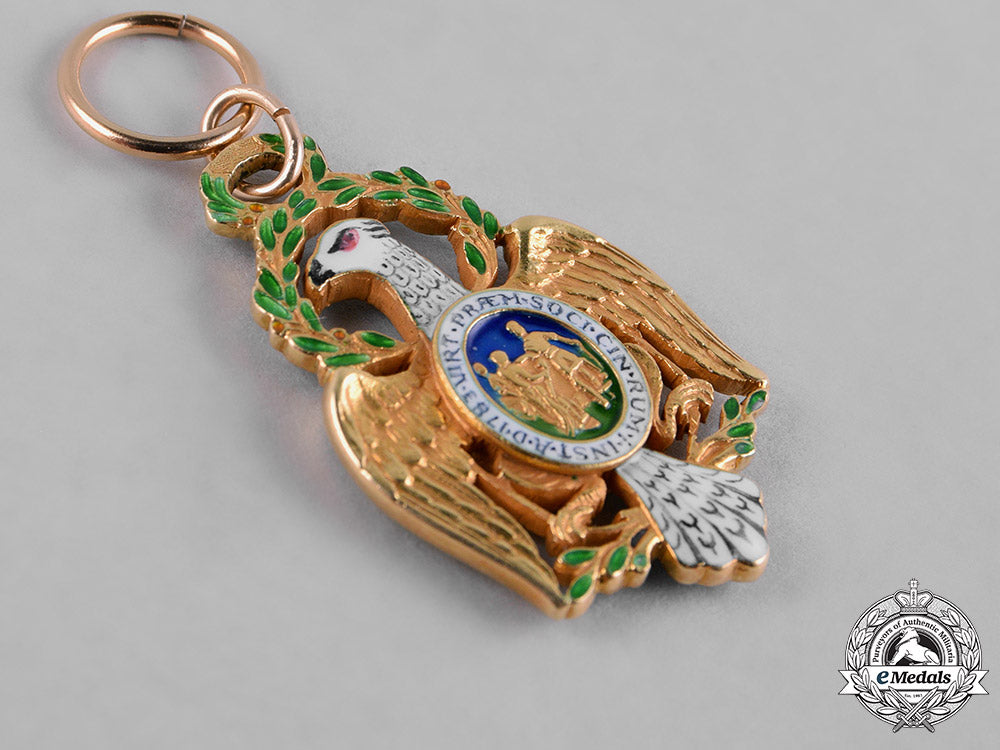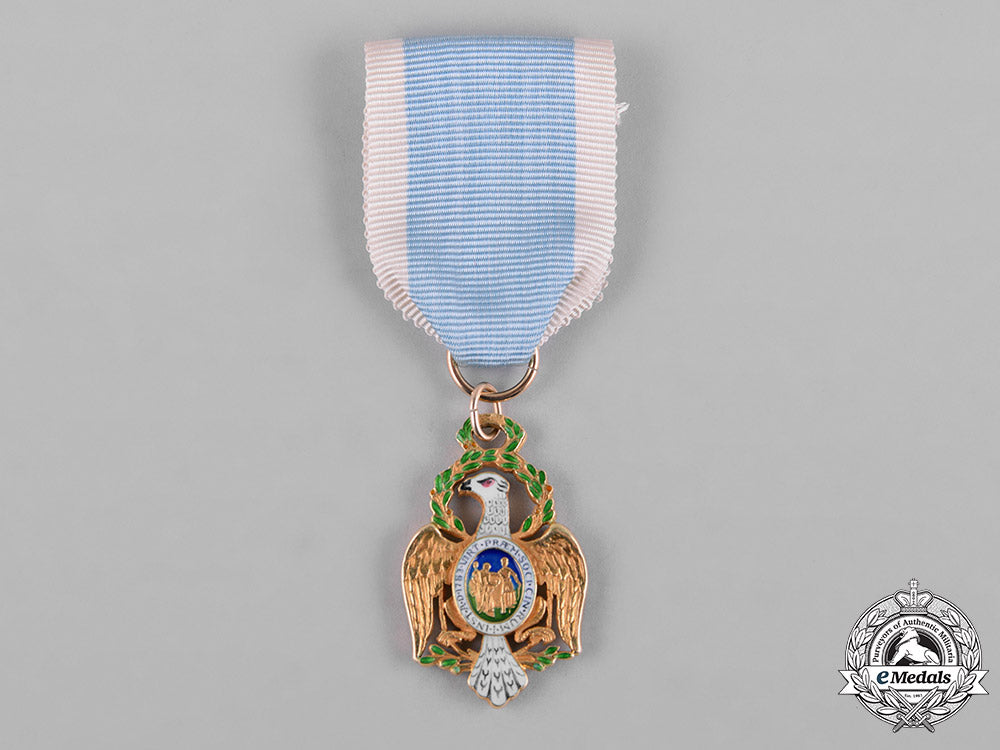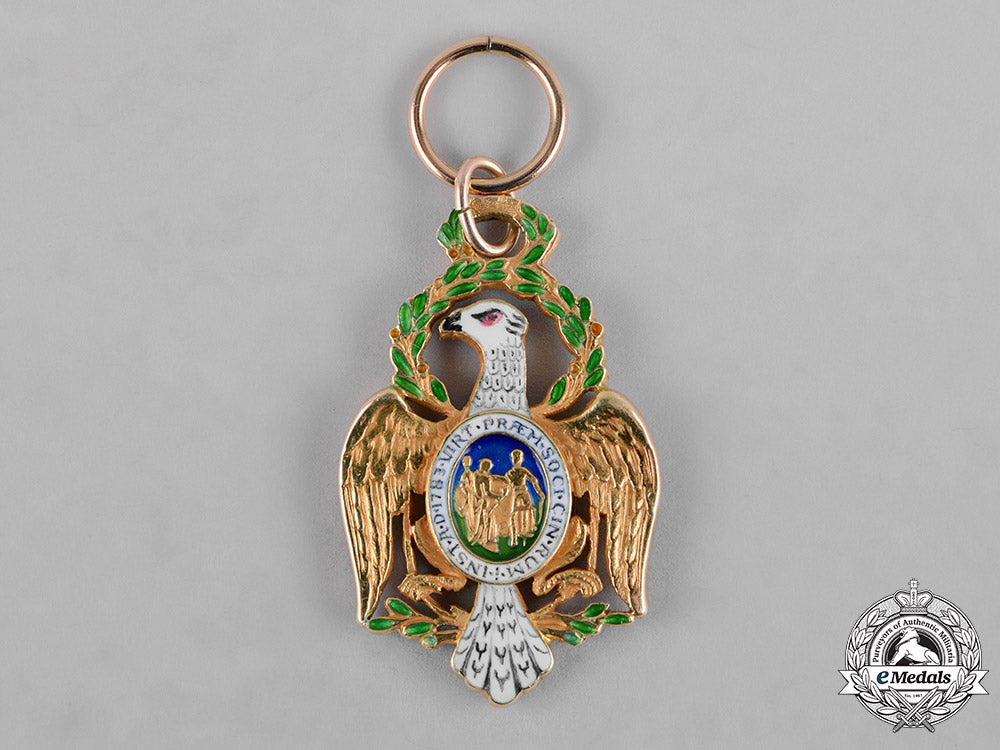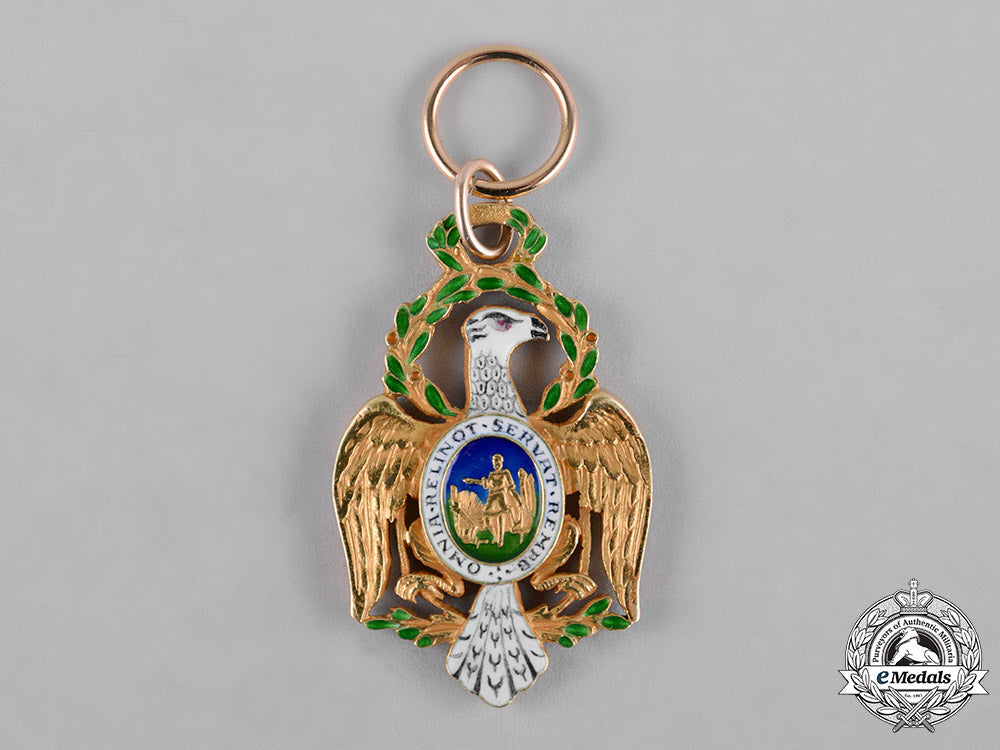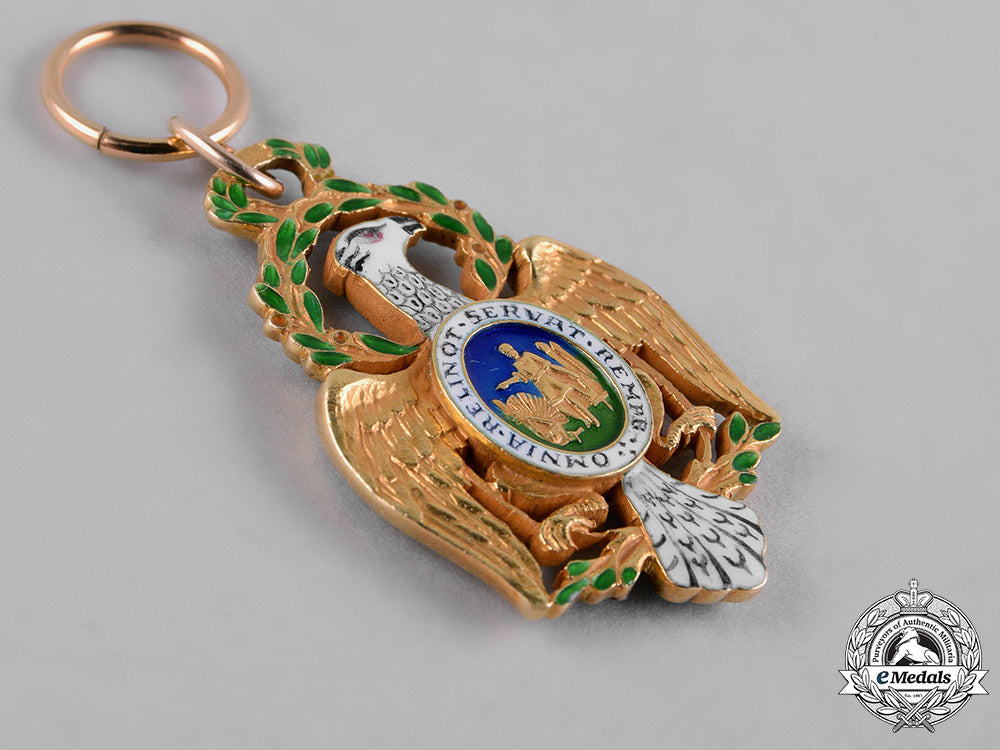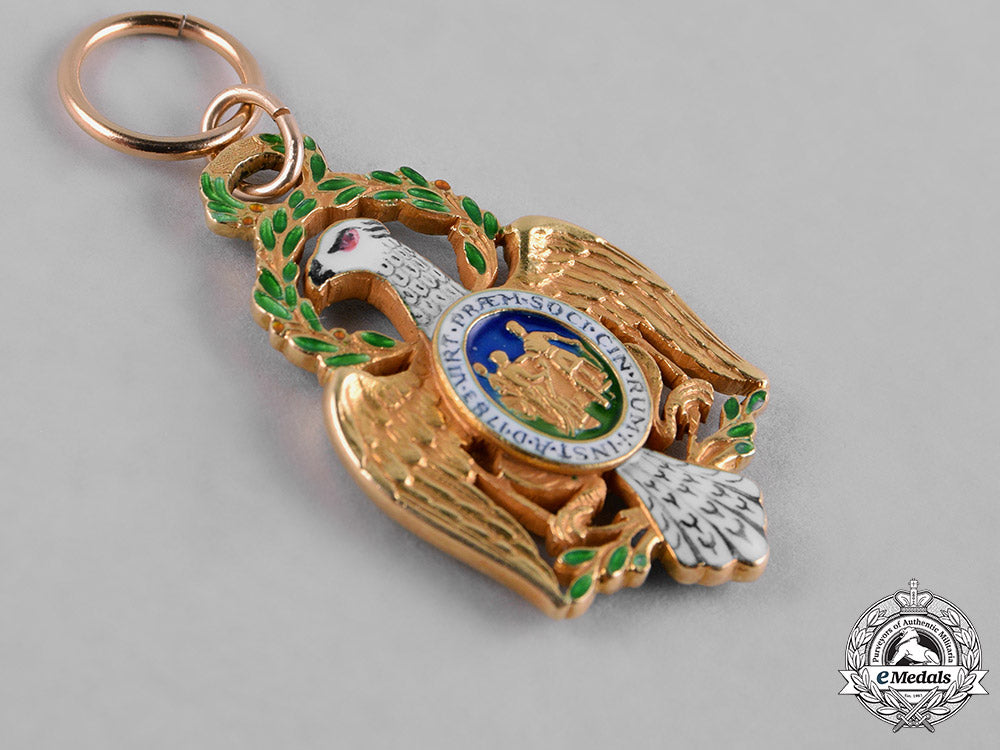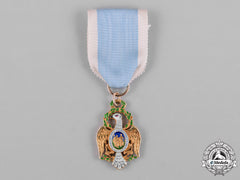
LOADING ...
In response to evolving domestic opinion, eMedals Inc has made the conscious decision to remove the presentation of German Third Reich historical artifacts from our online catalogue. For three decades, eMedals Inc has made an effort to preserve history in all its forms. As historians and researchers, we have managed sensitive articles and materials with the greatest of care and respect for their past and present social context. We acknowledge the growing sentiments put forth by the Canadian public and have taken proactive actions to address this opinion.
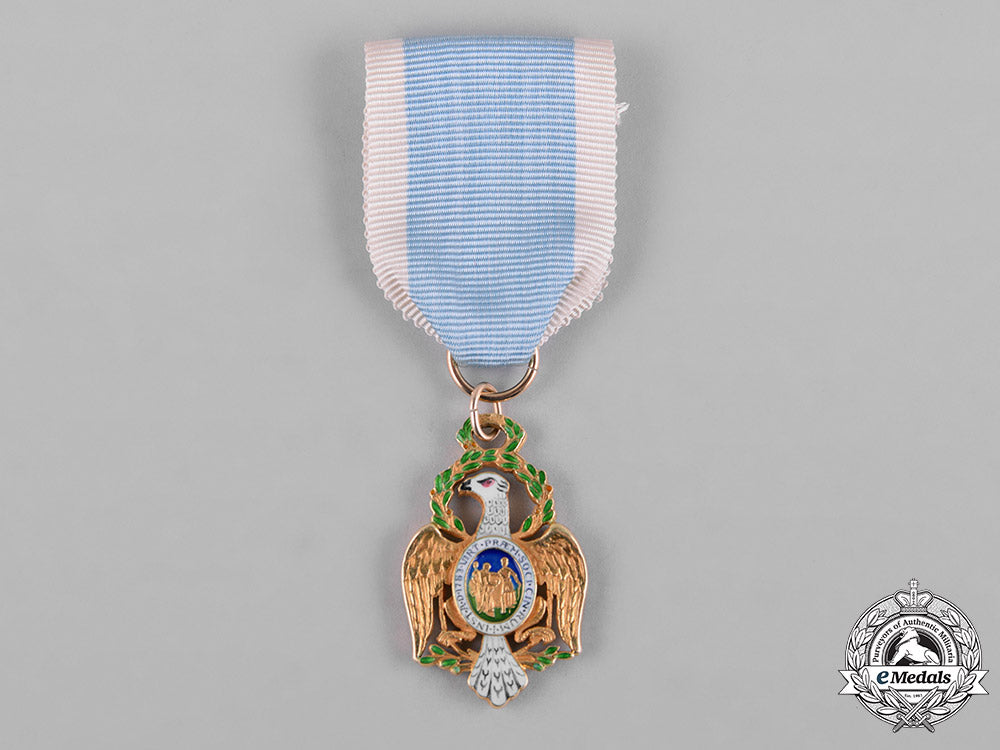
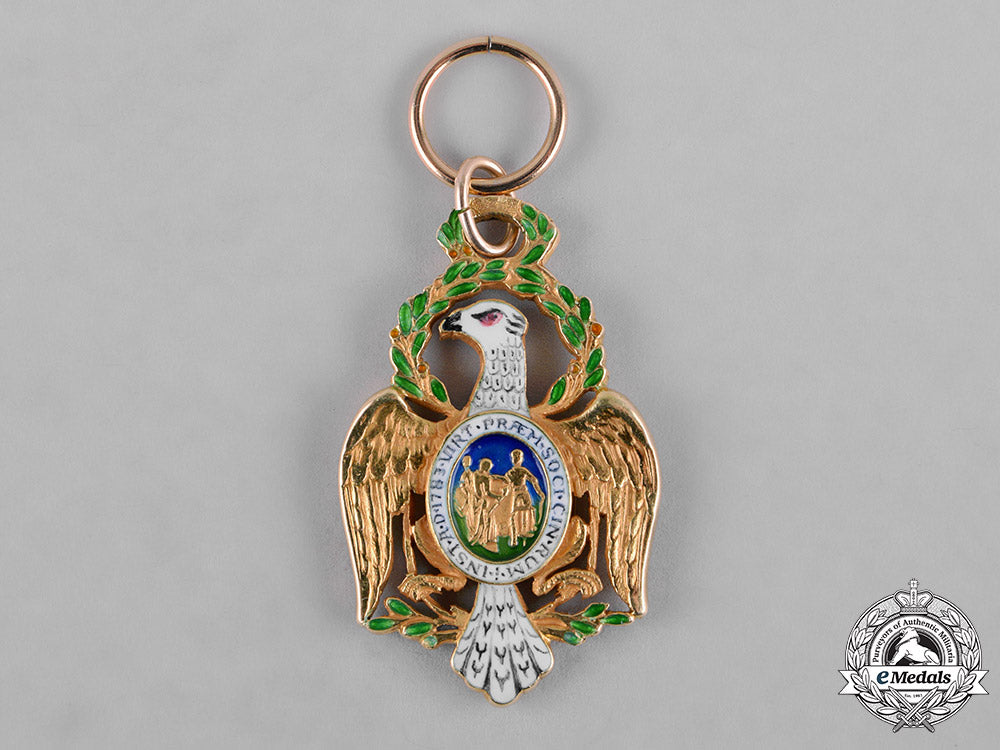
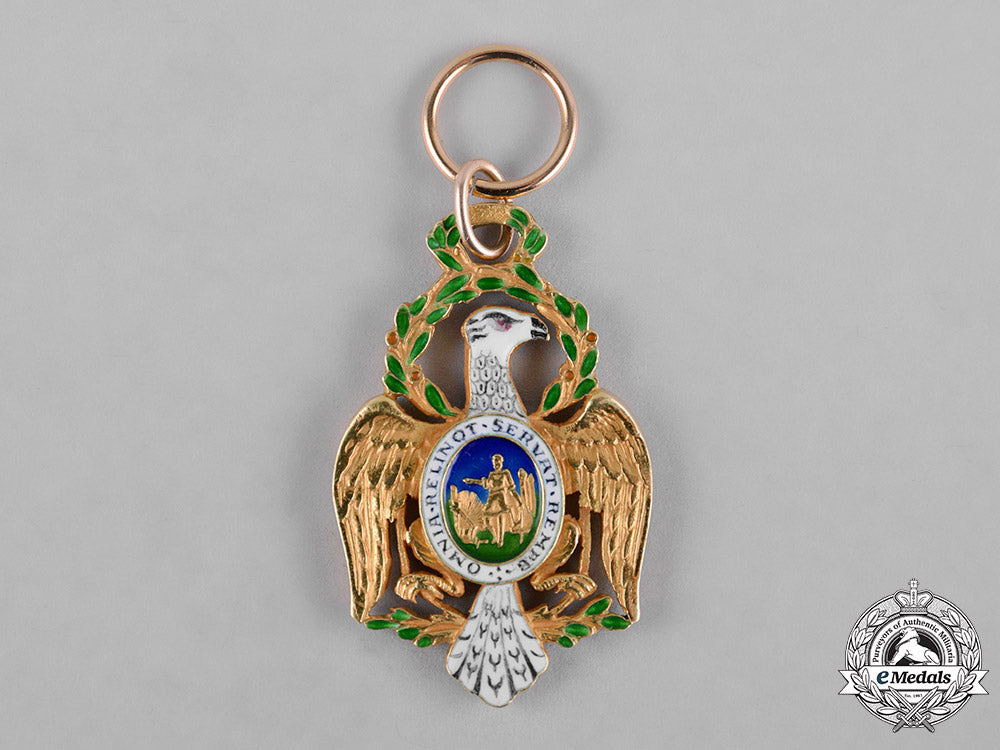
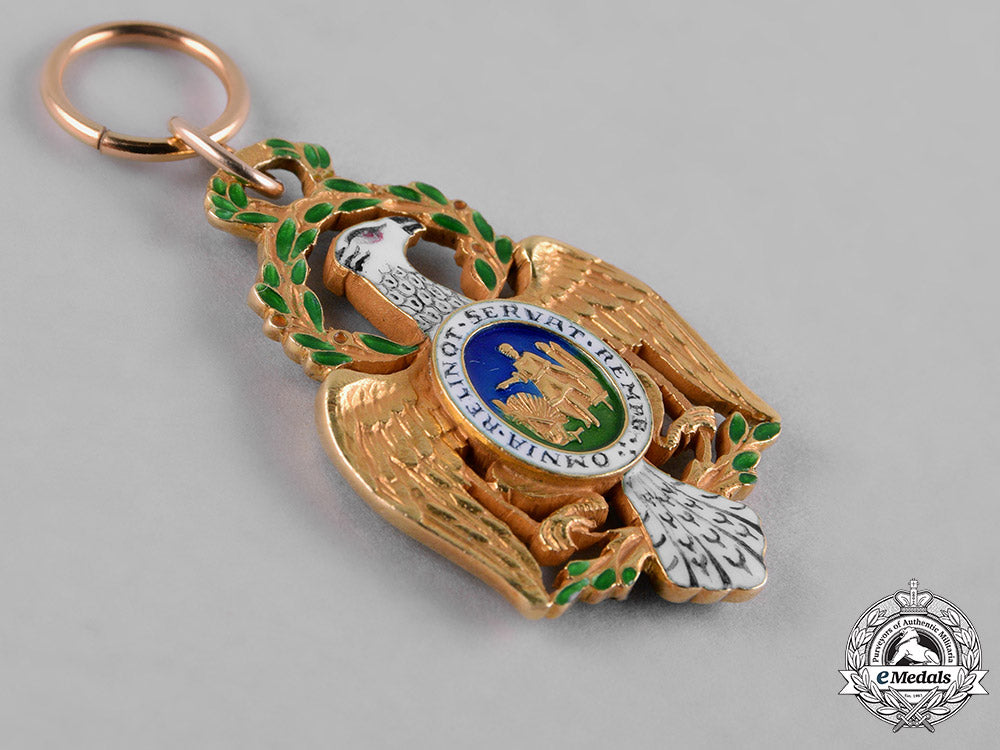
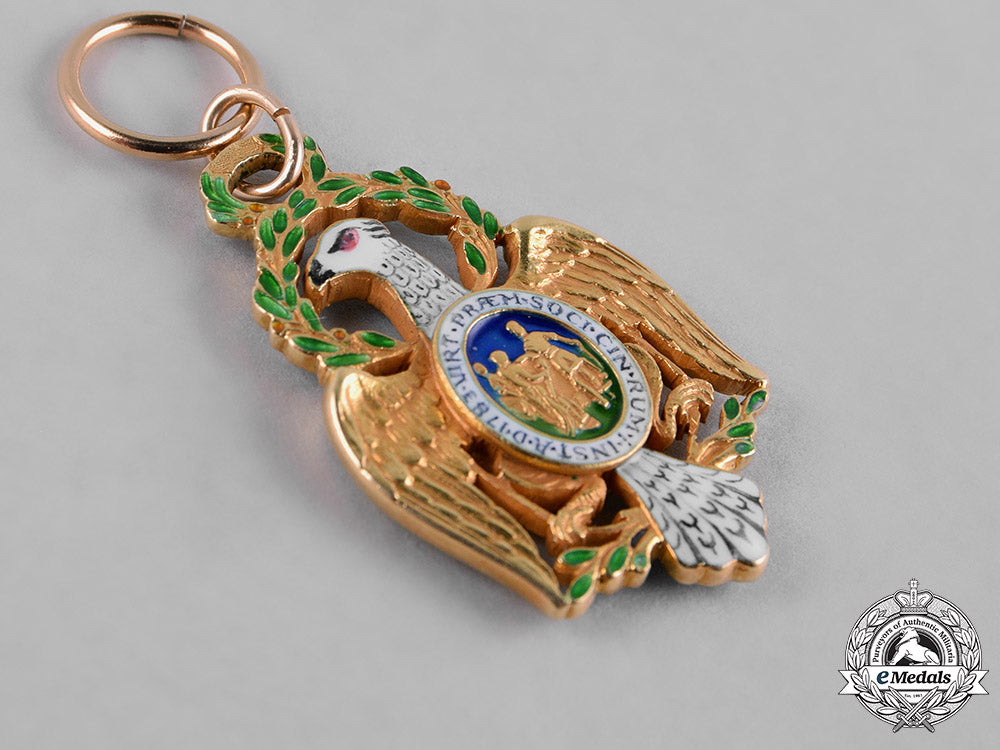
United States. A Society Of The Cincinnati Eagle Medal In Gold, Tench Tilghman Type, C.1951.
United States. A Society Of The Cincinnati Eagle Medal In Gold, Tench Tilghman Type, C.1951.
SKU: ITEM: M0303-125a
Current Bid:
Your Max Bid:
Bid History:
Time Remaining:
Couldn't load pickup availability
Shipping Details
Shipping Details
eMedals offers rapid domestic and international shipping. Orders received prior to 12:00pm (EST) will be shipped on the same business day.* Orders placed on Canadian Federal holidays will be dispatched the subsequent business day. Courier tracking numbers are provided for all shipments. All items purchased from eMedals can be returned for a full monetary refund or merchandise credit, providing the criteria presented in our Terms & Conditions are met. *Please note that the addition of a COA may impact dispatch time.
Shipping Details
eMedals offers rapid domestic and international shipping. Orders received prior to 12:00pm (EST) will be shipped on the same business day.* Orders placed on Canadian Federal holidays will be dispatched the subsequent business day. Courier tracking numbers are provided for all shipments. All items purchased from eMedals can be returned for a full monetary refund or merchandise credit, providing the criteria presented in our Terms & Conditions are met. *Please note that the addition of a COA may impact dispatch time.
Description
Description
United States. The Society of The Cincinnati Eagle Medal. Tench Tilghman Type. (1950-). Likely manufactured by Bailey, Banks & Biddle, this is a fine example of a modern Tilghman Eagle. In 18kt Gold, this right facing Eagle features outstretched wings with three visible tiers of feathers in a layered manner, with a white enamelled body, the head features a large central eye in dark red, hooded by a distinct eyebrow, with an oversized hooked beak detailed in black enamel, the neck displays a honeycomb design similar to that of the 1784 L’Enfant variant, the whole head is surrounded by a green and red enamelled laurel wreath which is surmounted by a smaller wreath with a lightly pebbled rectangula field at the top, the legs distinctly portray three talons which are gripping a thin Gold strand stemming vertically from the wings and curving towards the tail on each side where a green enamelled laurel branch sits, extending out to touch the tip of each wing, the tail is in white enamel presenting five feathers by way of four vertical lines with wishbone designs in the three central columns and three curved lines on each of the two outer columns, obverse centre presents a blue enamel medallion with green ground illustrating two senators presenting a sword to Cincinnatus, in a white surround the hand painted motto VIRT PRAEM SOCI CIN RUM INST AD 1783 (Society of the Cincinnati, Instituted 1783), beginning at 11 o’clock, centre reverse medallion also in blue enamel with the figure of Cincinnatus standing with a plow, sunburst on his left and fortification on his right, in a white surround with the hand painted motto OMNIA RELINQT SERVAT REMPB (He abandoned everything to serve his country) beginning at 6 o’clock, measures 24.78 (w) x 39.41 (h), weighs 17.2 grams, light green enamel staining on the interior and exterior edges on both the obverse and reverse, light wear to shoulders edges of wings, enamels fully intact, on correct replacement ribbon, overall in very fine condition.
The Tilghman Eagle: The original eagle presented to Maryland Lieutenant Colonel Tench Tilghman (1744-1786, an aide to General Washington), was an L’Enfant Eagle crafted in 1784. It features a black beak, swelling of the back of the head (instead of a crest), and wishbone details on the tail. It became the basis for the standard official eagle of the Society in March 1937 when Alva Nelson made a die for the exact replication of the 1784 version. During that year, these eagles were made and numbered by Hein A. W Behrbohm in New York. This firm made ten eagles before Nelson unexpectedly died, and the manufacturing was transferred to A.H. Fetting. From 1938-1947, a total of twenty-four Tench Tilghman Eagles were made by the A.H Fetting Company. However, due to the expense of the detailed work, the prices rose to ninety dollars per eagle, resulting in Fetting returning the dies and shutting down production. From 1947 until 1950, there were no Tilghman eagles manufactured while the dies were being sent to Bailey, Banks & Biddle in Philadelphia, a firm which had been producing other eagles since 1902. Eventually the manufacturing and retailing was transferred to A.M Ross of Jenkintown, a firm located in Pennsylvania (established 1955) which had been creating badges for some time. This type is identified as No. 76 in Minor Myers Jr.’s book “The Insignia of The Society of the Cincinnati” on page 111.
Footnote: The American Revolution began in 1776 and persisted until 1873 despite the decisive victory over the English at Yorktown in 1781. The constant presence of Americans and French Armies eventually resulted in the English signing of a peace treaty in September 1783.
Major General Henry Knox, General Washington’s Chief of Artillery, had the idea of creating a society long before the resolution of the war. However, it was only on April 15, 1783 that his notions for a fraternal patriotic organization were turned into a written proposal. The Society of the Cincinnati was established roughly one month later, with General George Washington serving as the first President General, until his death in 1799. Military personnel (those who served minimum three years or were dismissed) along with all continental officers were eligible to become members. Approximately 2400 officers joined the Society as original members and made a contribution of one months' pay towards the organization and the officer’s families. The principles of the order were as follows: “1. An incessant attention to preserve inviolate those exalted rights and liberties of human nature. 2. An unalterable determination to promote and cherish between the respective states the national honor. 3. To render permanent and cordial affection subsisting among the officers, to dictate brotherly kindness in all things and particularly extend to the most substantial acts of beneficence towards those officers and their families who unfortunately may be under the necessity of receiving it.”
The Insignia of the Society was designed by Major Pierre L’Enfant of the Continental Corps of Engineers. He decided that the medal should be no larger than a dollar, and should contain an eagle, as the bird is specific to the North American continent. The medal, generally known as the Eagle, was partially modelled after the French Order of Saint Louis and the Order of Military Merit. In October of 1783, L’Enfant was commissioned by the President General to sail to Paris and oversee the fabrication of the badges in 1784 by Duval and Francastel. The first group of forty-five were “made in a slight way” (measuring 31mm) costing $17 dollars each. For the other members, L’Enfant had a batch of 140 badges made to be sold to individual societies members, which were sold at $26 each. The Medals have since been manufactured by various American and French firms including Jeremiah Andrews, Tiffany & Co., Arthus Bertrand. In 1902, Bailey, Banks & Biddle were contracted to produce standard eagles and by the 1960s they were the official insignia maker.
The Eagles were largely made by hand, resulting in as many as twenty varieties and patterns. However, they all contain allusions to the Patron Saint of the Roman Dictator Cincinnatus. In a translation of Livy’s History of Rome, it is told that Lucius Quintius Cincinnatus, a citizen and farmer, was appointed Dictator when tidings from five horsemen threatened the city. He accepted the position and under his leadership, all potential dangers were driven away. Cincinnatus then resigned from his position and returned to his fields and agrarian lifestyle. For these actions, he is revered as the quintessential example of Roman simplicity and patriotism, and the Society aims to follow this precedent in all endeavours.
Criticism of the Society exists in the mid-1780s, when citizens argued that this society of officers, adorned by badges, were claiming they had a duty to protect the liberties that the people fought and gave lives for. The strife became so rampant the Society was nearly abolished, however that action would have insulted the French, who were allowed to wear the badge and considered it an official decoration from the United States. The society forged on, however, membership numbers dropped to nearly 300 by the middle of the 19th century resulting in the dissolution of several state societies. By 1854, the rules of membership were altered, allowing the descendants of officers to join, regardless if the officer himself was an original member. This resulted in a flourish of members and an increase in interest. Although the Civil War delayed the vision to revive all societies, it offered a renewed sense of patriotism and encouraged the growth of the organization in both individual numbers and the re-establishment of previously lost societies.
As of 1938, the international headquarters is located at the Anderson House in Washington, D.C. Now in its’ third century, the Society promotes the public interest in the revolution through its library and museum collections, publications and other activities. The Eagle remains a rare and unique representation of the oldest hereditary society in the United States.
Description
United States. The Society of The Cincinnati Eagle Medal. Tench Tilghman Type. (1950-). Likely manufactured by Bailey, Banks & Biddle, this is a fine example of a modern Tilghman Eagle. In 18kt Gold, this right facing Eagle features outstretched wings with three visible tiers of feathers in a layered manner, with a white enamelled body, the head features a large central eye in dark red, hooded by a distinct eyebrow, with an oversized hooked beak detailed in black enamel, the neck displays a honeycomb design similar to that of the 1784 L’Enfant variant, the whole head is surrounded by a green and red enamelled laurel wreath which is surmounted by a smaller wreath with a lightly pebbled rectangula field at the top, the legs distinctly portray three talons which are gripping a thin Gold strand stemming vertically from the wings and curving towards the tail on each side where a green enamelled laurel branch sits, extending out to touch the tip of each wing, the tail is in white enamel presenting five feathers by way of four vertical lines with wishbone designs in the three central columns and three curved lines on each of the two outer columns, obverse centre presents a blue enamel medallion with green ground illustrating two senators presenting a sword to Cincinnatus, in a white surround the hand painted motto VIRT PRAEM SOCI CIN RUM INST AD 1783 (Society of the Cincinnati, Instituted 1783), beginning at 11 o’clock, centre reverse medallion also in blue enamel with the figure of Cincinnatus standing with a plow, sunburst on his left and fortification on his right, in a white surround with the hand painted motto OMNIA RELINQT SERVAT REMPB (He abandoned everything to serve his country) beginning at 6 o’clock, measures 24.78 (w) x 39.41 (h), weighs 17.2 grams, light green enamel staining on the interior and exterior edges on both the obverse and reverse, light wear to shoulders edges of wings, enamels fully intact, on correct replacement ribbon, overall in very fine condition.
The Tilghman Eagle: The original eagle presented to Maryland Lieutenant Colonel Tench Tilghman (1744-1786, an aide to General Washington), was an L’Enfant Eagle crafted in 1784. It features a black beak, swelling of the back of the head (instead of a crest), and wishbone details on the tail. It became the basis for the standard official eagle of the Society in March 1937 when Alva Nelson made a die for the exact replication of the 1784 version. During that year, these eagles were made and numbered by Hein A. W Behrbohm in New York. This firm made ten eagles before Nelson unexpectedly died, and the manufacturing was transferred to A.H. Fetting. From 1938-1947, a total of twenty-four Tench Tilghman Eagles were made by the A.H Fetting Company. However, due to the expense of the detailed work, the prices rose to ninety dollars per eagle, resulting in Fetting returning the dies and shutting down production. From 1947 until 1950, there were no Tilghman eagles manufactured while the dies were being sent to Bailey, Banks & Biddle in Philadelphia, a firm which had been producing other eagles since 1902. Eventually the manufacturing and retailing was transferred to A.M Ross of Jenkintown, a firm located in Pennsylvania (established 1955) which had been creating badges for some time. This type is identified as No. 76 in Minor Myers Jr.’s book “The Insignia of The Society of the Cincinnati” on page 111.
Footnote: The American Revolution began in 1776 and persisted until 1873 despite the decisive victory over the English at Yorktown in 1781. The constant presence of Americans and French Armies eventually resulted in the English signing of a peace treaty in September 1783.
Major General Henry Knox, General Washington’s Chief of Artillery, had the idea of creating a society long before the resolution of the war. However, it was only on April 15, 1783 that his notions for a fraternal patriotic organization were turned into a written proposal. The Society of the Cincinnati was established roughly one month later, with General George Washington serving as the first President General, until his death in 1799. Military personnel (those who served minimum three years or were dismissed) along with all continental officers were eligible to become members. Approximately 2400 officers joined the Society as original members and made a contribution of one months' pay towards the organization and the officer’s families. The principles of the order were as follows: “1. An incessant attention to preserve inviolate those exalted rights and liberties of human nature. 2. An unalterable determination to promote and cherish between the respective states the national honor. 3. To render permanent and cordial affection subsisting among the officers, to dictate brotherly kindness in all things and particularly extend to the most substantial acts of beneficence towards those officers and their families who unfortunately may be under the necessity of receiving it.”
The Insignia of the Society was designed by Major Pierre L’Enfant of the Continental Corps of Engineers. He decided that the medal should be no larger than a dollar, and should contain an eagle, as the bird is specific to the North American continent. The medal, generally known as the Eagle, was partially modelled after the French Order of Saint Louis and the Order of Military Merit. In October of 1783, L’Enfant was commissioned by the President General to sail to Paris and oversee the fabrication of the badges in 1784 by Duval and Francastel. The first group of forty-five were “made in a slight way” (measuring 31mm) costing $17 dollars each. For the other members, L’Enfant had a batch of 140 badges made to be sold to individual societies members, which were sold at $26 each. The Medals have since been manufactured by various American and French firms including Jeremiah Andrews, Tiffany & Co., Arthus Bertrand. In 1902, Bailey, Banks & Biddle were contracted to produce standard eagles and by the 1960s they were the official insignia maker.
The Eagles were largely made by hand, resulting in as many as twenty varieties and patterns. However, they all contain allusions to the Patron Saint of the Roman Dictator Cincinnatus. In a translation of Livy’s History of Rome, it is told that Lucius Quintius Cincinnatus, a citizen and farmer, was appointed Dictator when tidings from five horsemen threatened the city. He accepted the position and under his leadership, all potential dangers were driven away. Cincinnatus then resigned from his position and returned to his fields and agrarian lifestyle. For these actions, he is revered as the quintessential example of Roman simplicity and patriotism, and the Society aims to follow this precedent in all endeavours.
Criticism of the Society exists in the mid-1780s, when citizens argued that this society of officers, adorned by badges, were claiming they had a duty to protect the liberties that the people fought and gave lives for. The strife became so rampant the Society was nearly abolished, however that action would have insulted the French, who were allowed to wear the badge and considered it an official decoration from the United States. The society forged on, however, membership numbers dropped to nearly 300 by the middle of the 19th century resulting in the dissolution of several state societies. By 1854, the rules of membership were altered, allowing the descendants of officers to join, regardless if the officer himself was an original member. This resulted in a flourish of members and an increase in interest. Although the Civil War delayed the vision to revive all societies, it offered a renewed sense of patriotism and encouraged the growth of the organization in both individual numbers and the re-establishment of previously lost societies.
As of 1938, the international headquarters is located at the Anderson House in Washington, D.C. Now in its’ third century, the Society promotes the public interest in the revolution through its library and museum collections, publications and other activities. The Eagle remains a rare and unique representation of the oldest hereditary society in the United States.
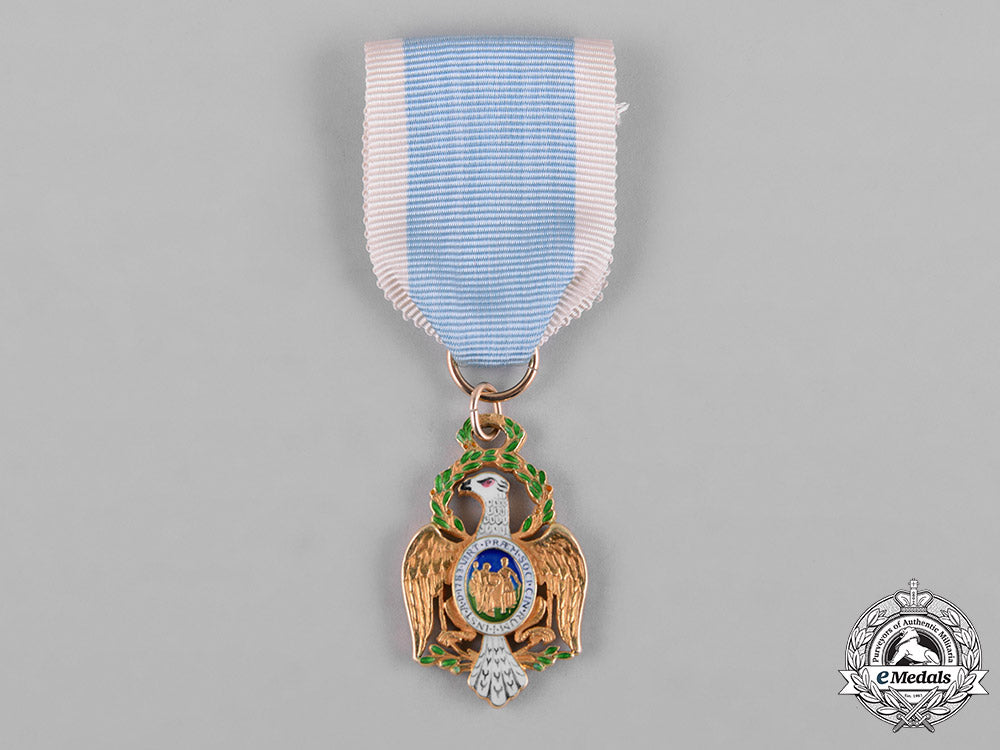

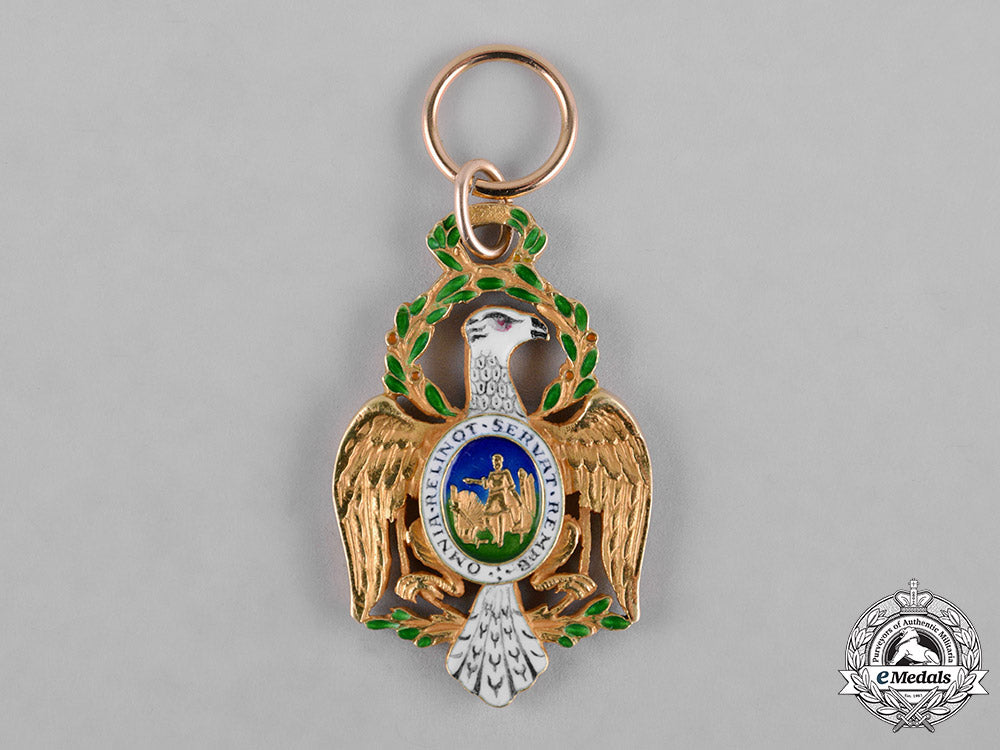
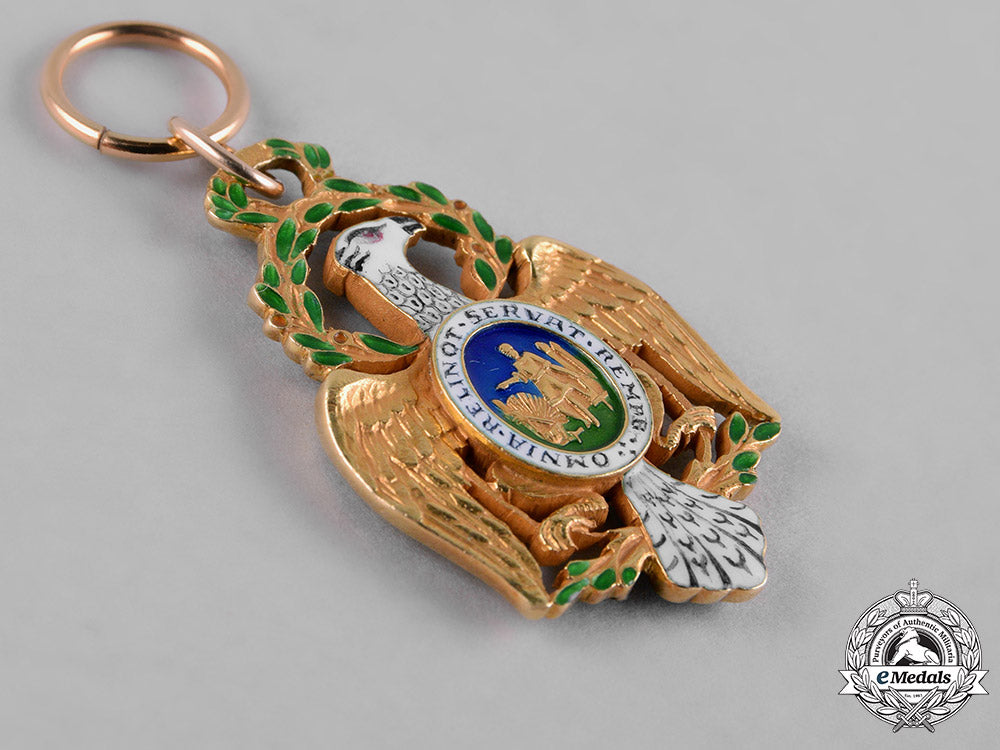
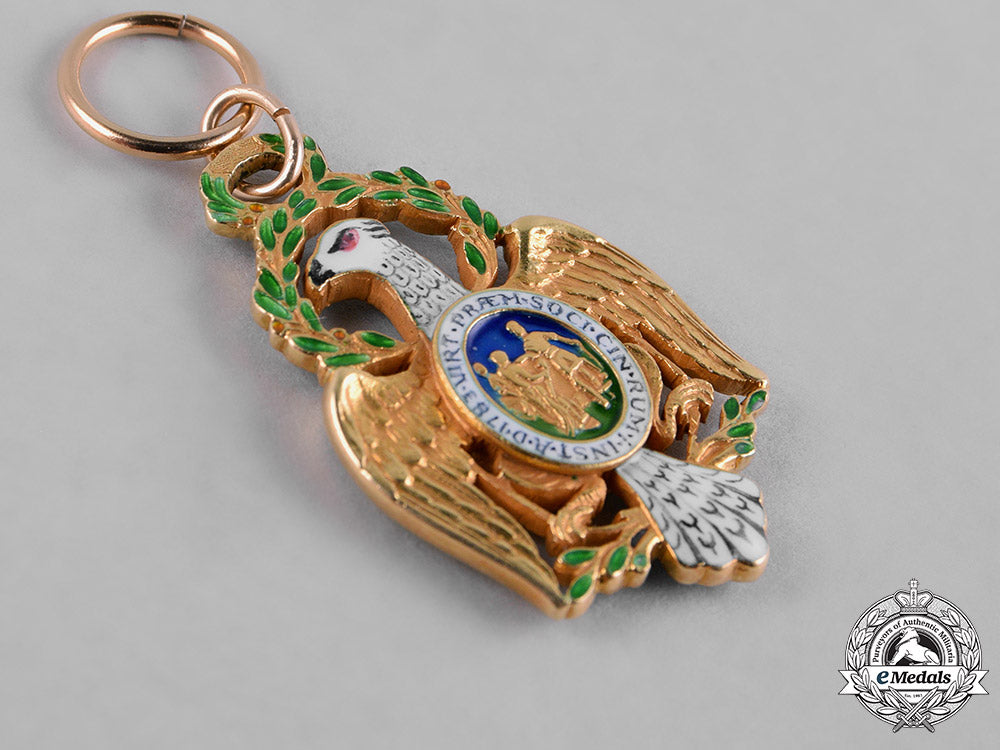
You May Also Like
Russia, Imperial. An Order of St. Stanislaus, II Class with Swords, in Gold
EU23504
Germany, Imperial. A 1914 Iron Cross I Class, By Wilhelm Deumer, C. 1940
G55363
Greece, Republic. A Hellenic Army Presentation Dagger, c.1990
EU23474
Austria, Imperial. A Merit Cross 1849, III Class and Bravery Medal, I Class
EU23461
Austria, Imperial. A Military Merit Cross, III Class
EU23463
-
Russia, Imperial. An Order of St. Stanislaus, II Class with Swords, in Gold
EU23504
Add to CartRegular price $3,650 USDRegular price $0 USD Sale price $3,650 USDUnit price / per -
Germany, Imperial. A 1914 Iron Cross I Class, By Wilhelm Deumer, C. 1940
G55363
Add to CartRegular price $270 USDRegular price $0 USD Sale price $270 USDUnit price / per -
Greece, Republic. A Hellenic Army Presentation Dagger, c.1990
EU23474
Add to CartRegular price $270 USDRegular price $0 USD Sale price $270 USDUnit price / per -
Austria, Imperial. A Merit Cross 1849, III Class and Bravery Medal, I Class
EU23461
Add to CartRegular price $270 USDRegular price $0 USD Sale price $270 USDUnit price / per -
Austria, Imperial. A Military Merit Cross, III Class
EU23463
Add to CartRegular price $200 USDRegular price $0 USD Sale price $200 USDUnit price / per
Do you have a similar item you are interested in selling?
Please complete the form and our client care representatives will contact you.
Sell Item